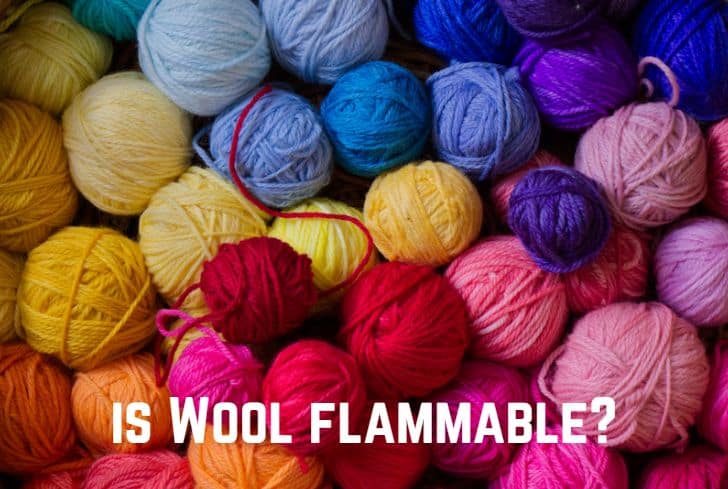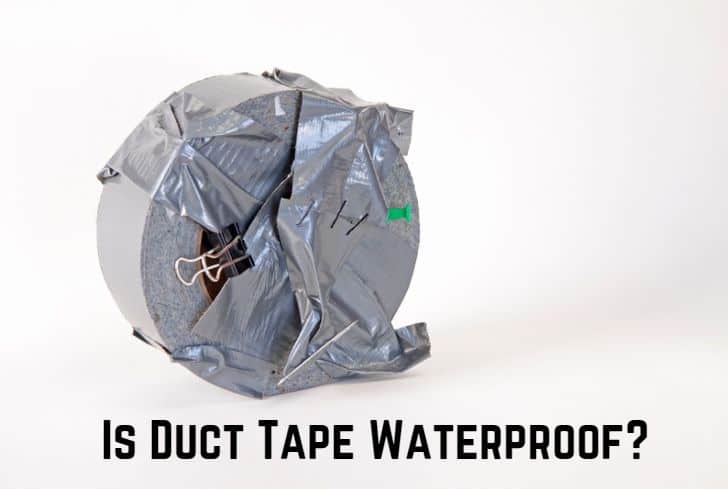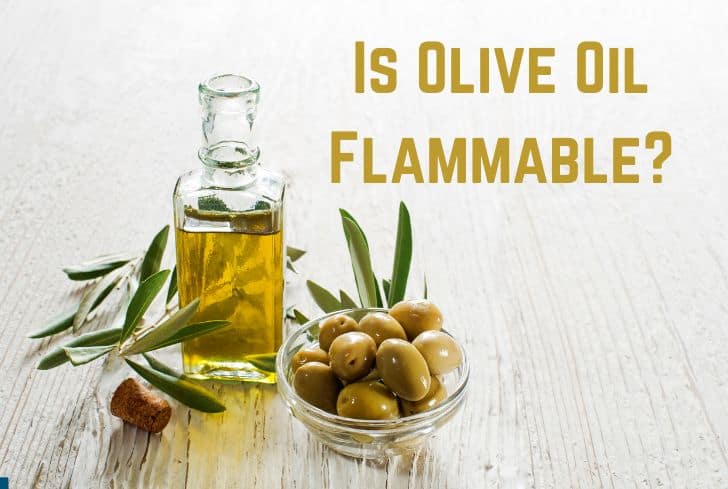Is Wool Flammable? (No. It’s Not)

Bring your thick wool blanket or sweater when it starts to get chilly. One of the most popular natural fibers in the world is wool. In addition to producing stunning products, it has a long lifespan. But can it withstand fire? Is wool flammable, in simple terms?
In this article, we provide a detailed answer to that question. We also explain what occurs when wool burns and whether it is fire-resistant or retardant. We’ll also discuss whether wool melts, emits smoke, or conducts electricity. We conclude by giving tips on how to prevent wool from igniting.
Read: Is Ozone Flammable?
Is Wool Flammable?
Wool is not flammable and unlikely to ignite. It has a high water and nitrogen content in its cell, which makes it naturally flame-resistant. Wool’s high water content makes it difficult to maintain a flame. It can catch on fire, but the fire will die out quickly. Wool is likely to put out the flame naturally unless there is a lot of oxygen present.
Since wool will only burn at temperatures higher than 1058 °F (570 °C), it is not flammable. It is quite difficult to ignite because of this high ignition temperature. Natural fibers like wool have cells with a high nitrogen and water content. Wool can’t easily catch fire and can’t burn for a very long time due to the water and nitrogen present.
Wool is also non-flammable since it needs more oxygen to ignite than in the atmosphere. That means wool won’t ignite or burn on its own under typical oxygen conditions. Wool has a higher Limiting Oxygen Index (LOI) than other materials.
Another factor that makes wool non-flammable is its low heat of combustion and low heat release. That measures the amount of heat energy released in the burning process.
Want to find out if wool is flammable, do the burn test.
Is Wool Fire Resistant?
Wool is fire-resistant. It needs an environment with high oxygen levels to overcome its cells’ water and nitrogen content. Wool can easily catch fire in extremely high heat, but the flame will only last a while. The wool will briefly glow before going out. Only at extremely high temperatures will flame-resistant materials ignite.
Second, the wool’s cross-linked cell membrane expands when heated, creating an insulating barrier that stops the flame from spreading. It also means that wool’s natural fibers will expand and put out the flame when on fire. Because there is less air between the strands of the material due to its high water and nitrogen content, there is less oxygen available to fuel any possible fires.
Wool is perfect for making interior fabric products because of its fire resistance. If a fire starts, the woolen materials will lessen the likelihood that it will spread inside the house. Carpets, beds, curtains, and upholstery are among the interior products.
Wool is also perfect for manufacturing protective clothes for firefighters or anyone exposed to fire because of its fire-resistant qualities. Wool won’t melt or spill on clothing; it will glow and eventually die.
Is Wool Fire Retardant?
Wool is not fire retardant. A flame retardant fabric must undergo chemical processes to make it highly resistant to ignition. Wool does ignite, but it quickly self-extinguishes. Due to chemical processes, flame retardant materials are usually synthetic and melt instead of self-extinguishing. Wool has no chemicals and hence will not readily burn.
Chemicals are typically used to treat materials to stop them from burning further. If the material is not fire-retardant, it must be treated to self-extinguish. However, since self-extinguishing materials like wool already have fire resistance, no chemicals are required.
Wool will never lose its self-extinguishing properties. Fire retardant materials, however, lose their treatment over time and become less retardant if they are not properly cared for. Fire-retardant fabrics, unlike wool, release dangerous chemical vapors when they catch fire.
Does Wool Melt?
No, wool does not melt. It is a chemical-free, natural fabric. Wool won’t melt when it burns; instead, it will glow and burn to ashes. Chemical properties of a substance cause it to melt rather than burn up. There are no chemical processes used on wool. Compared to natural fibers like wool, synthetic fibers are more likely to melt.
When molecules are exposed to intense heat, they begin to heat up, speeding up and squeezing past one another to form a liquid. The formation of liquid from a solid is known as melting.
Wool is not capable of reaching the melting temperatures required. Its water content will put out the fire before it even starts.
Read: Is Blood Flammable?
Does Wool Produce Smoke?
Although not as much as synthetic fibers, wool does smoke. Wool emits smoke and a small amount of gas when burnt. But the expansion of wool’s cell structure inhibits the widespread creation of smoke and gas. Chemically treated materials have a higher propensity to emit a lot of smoke.
Does Wool Conduct Electricity?
Wool does not conduct electricity. Since wool’s electrons cannot flow freely, they cannot carry an electrical charge. I doubt you would wear it comfortably on your body if it did. Wool’s crimped texture creates countless small air pockets that trap air and act as a thermal barrier. Air is a good insulator.
Since air molecules are widely spaced apart, conductivity is restricted. Only electrons that can physically touch one another can carry an electric current.
Ideally, any substance that conducts heat will also conduct electricity well. Wool doesn’t conduct heat because of the air pocket barrier. The same barrier will stop any electrical current in its tracks.
Consider a wool sweater as an example. Your body heat cannot escape the atmosphere when you wear a knitted woolen sweater because of the tiny air pockets forming a barrier.
On the other hand, others allege that touching wool has given them an electric jolt. But the key explanation for such is static or triboelectricity.
What Happens to Wool When Burned?
Wool will curl away from the fire when it begins to burn. It releases a smell resembling that of burned hair or feathers. If you touch the burned area, it will shrink and crumble. Ash will be a dark grey color after burning. It looks like an overcooked item on the grill.
The good thing is that you don’t have to worry about wool melting on your skin and scalding it. Wool will not melt even when burnt.
Read: Is Perfume Flammable?
How to Keep Wool From Igniting?
Even if wool won’t catch fire and spread the flames, you might not want it to ignite in the first place. Here are some ideas for preventing wool from igniting.
- Keep it away from oxygen. If you are transporting wool, it might be ideal to have a reduced oxygen atmosphere. Try to bring down the oxygen level to 16%. You can use nitrogen to bring the oxygen level down.
- Wash your wool to ensure the raw oil(lanolin) is gone. Lanolin can oxidize in the air and cause an exothermic reaction, leading to the fat’s spontaneous ignition.
- Treat the wool with a fire suppressant or a fire retardant. Fire suppressants are typically water-based solutions containing a halide compound.
- When packing raw wool, compress it into a dense bale. Hence reducing the contact area between the wool and the air. Only the outside surface of the bale should be open to any ignition source. However, not too tight to damage the fabric.
Frequently Asked Questions
Can you put wool in boiling water?
You can wash your wool in hot boiling water. However, ensure the woolen garment is still throughout the process. If you move wool while using hot water, it will shrink. Choose the wool or gentle cycle when washing your wool clothing in the washing machine.
Does wet wool burn?
One of the rare materials that can produce heat when wet is merino wool. The porous fibers of wool absorb water when it is wet, trapping it inside the garment. Inside the fibers, the hydrogen bonds in water will break down, causing a chemical reaction that produces heat. Even one kilogram of merino wool is reported to provide as much heat for eight hours as an electric blanket.
Is wool weak when wet?
Wool fibers are stronger when dry and weaker when wet. If you handle wool improperly when wet, there are high chances of damage and distortion in shape.
Conclusion
Wool is non-flammable and fire-resistant. However, wool is not fire retardant as it doesn’t have chemicals added to make it not catch fire easily. The lack of chemicals in the wool will make it not melt when it starts burning. The high water and nitrogen content in wool makes it unable to sustain a flame.
Wool needs a lot of oxygen to continue burning, and that’s why it is fire-resistant. You will likely smell burnt hair or feathers when burning wool. Touching burnt wool will not burn you but will make the wool crumble. You can add fire suppressants to prevent your wool products from igniting.






